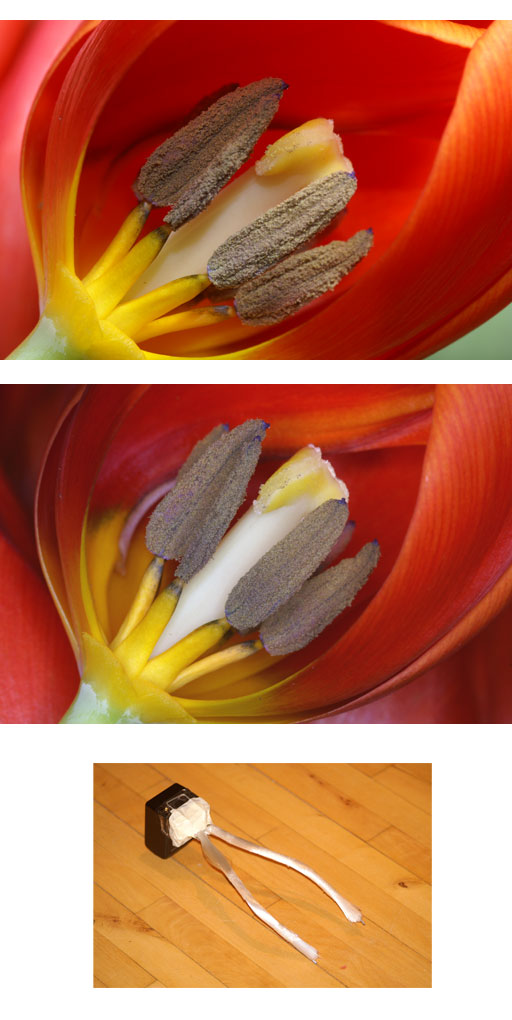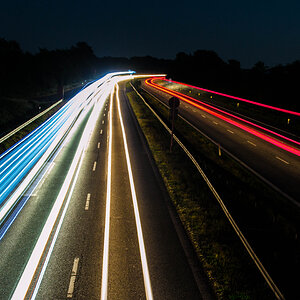tpe
TPF Noob!
- Joined
- Nov 18, 2005
- Messages
- 964
- Reaction score
- 12
- Location
- Copenhagen Denmark
- Website
- www.scientificillustration.net
- Can others edit my Photos
- Photos OK to edit
I have been struggling to get nice lighting on very close macro shots, to allow wide angle shots. Using a childs fiber optic lamp it is possible to rig a directional macro light set up. You can make bundles of fiber optic cables, each bundel would represent a seperate flash, as would be used in a 3 point light setup for example, the number of fibers determines the relative intensity and attaching them to a bit of coat hanger wire makes them easily positionable. If you then clip them onto your dedicated flash you have an instand macro light studio on the end of your camera. The picture below is the first test setup. picture one was shot at f:13 and pic 2 was nearly the same but at f:16 with a standard macro ring flash. I hope to incorporate some small polorizing filters so as it can get rid of nasty highlights on shiny objects. if anyone knows where i can get some polorizing plastic film cheaply it would be really appreciated.
Which light set up do you like best out of the shot below, right at the bottom you can see the fiber optic flash attachment.

The advantages are you can position your lights exactly, you need less room between the lens and the subject than with a standard ring flash, and you can controll shadow direction and softness and light diffusity (is that a word?).
thanks for looking
tim
Which light set up do you like best out of the shot below, right at the bottom you can see the fiber optic flash attachment.

The advantages are you can position your lights exactly, you need less room between the lens and the subject than with a standard ring flash, and you can controll shadow direction and softness and light diffusity (is that a word?).
thanks for looking
tim


 That's awesome! Great job on the innovation. I agree with the others, the first one is the best.
That's awesome! Great job on the innovation. I agree with the others, the first one is the best.



![[No title]](/data/xfmg/thumbnail/36/36643-92fe0dd9e247722bfefe299cd8a549f5.jpg?1619737670)
![[No title]](/data/xfmg/thumbnail/32/32004-4455324f0b4b5cc318dd35877147ac47.jpg?1619735148)